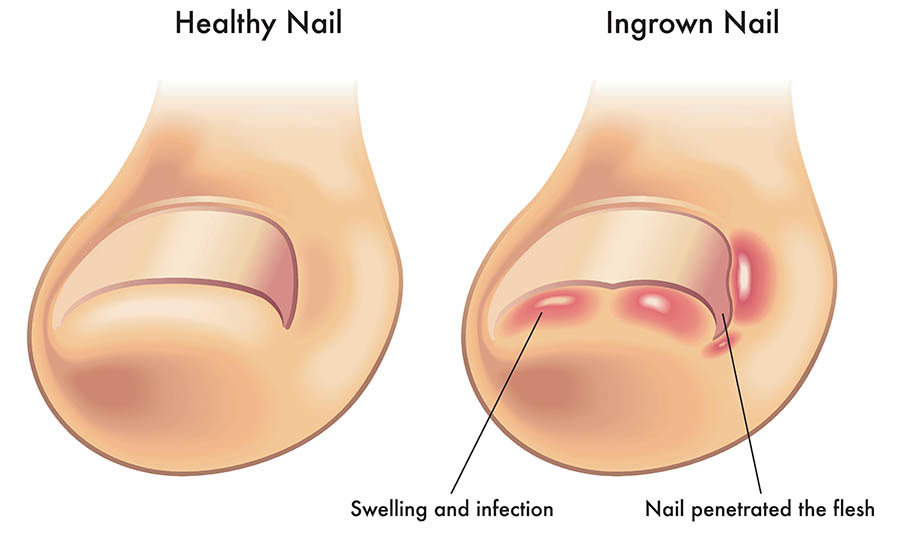
What is an ingrown toenail?
An ingrown toenail occurs when the side of the nail curls down and grows into the skin around the nail.
Any toe can be affected but it commonly occurs in the big toe.
An ingrown toenail can become painful and inflamed (tender, red and swollen).
Sometimes, it can become infected, which, if left untreated, can spread and infect the underlying bone.
What are the symptoms of an ingrown toenail?
If you have an ingrown toenail, the area may be:
- painful or tender
- red
- swollen
- surrounded by hardened skin
If the area becomes infected, you may notice fluid or pus, and symptoms that get worse rather than better.

What causes ingrown toenails?
You can get an ingrown toenail if you:
- have tight fitting shoes, socks, or tights that crowd your toes, putting pressure on your toenails
- cut your toenails too short or not straight across
- injure your toe, for example by stubbing it
- pick or tear the corners of your toenails
- have sweaty feet, making your skin soft and easier for toenails to dig in
- have toenails with naturally curved edges or that are fan-shaped
Ingrown toenails become more common in older people as the nails get thicker with age. They are more likely to become infected in people who have diabetes or circulation problems.
How are ingrown toenail treated?
If you have diabetes, nerve damage in your leg or foot, poor blood circulation to your foot or an infection around the nail, see your doctor or podiatrist (a trained therapist who diagnoses and treats foot conditions) immediately.
Otherwise, try this:
- Soak your feet in warm water for 15 to 20 minutes, 3 or 4 times a day.
- Then use a cotton bud to gently push away the skin from the nail.
- Repeat each day for a few weeks, allowing the nail to grow.
- As the end of the nail grows forward, push a tiny piece of cotton wool or dental floss under it to help the nail grow over the skin and not grow into it. Change the cotton wool or dental floss each time you soak your foot.
- Do not pick at the toenail or try to remove it yourself.
An infected toenail may be treated with antibiotics. Your doctor or podiatrist may need to drain the pus. In severe cases, part or all of nail may need to be removed.
Can ingrown toenails be prevented?
To help prevent an ingrown toenail:
- wear shoes that fit properly
- keep your feet clean and dry
- trim your nails properly — briefly soak your foot in warm water before trimming, and make sure you cut straight across, without tapering or rounding the corners or cutting them too short
People with diabetes or persistent foot problems should see a podiatrist regularly for routine foot checks and nail care.

